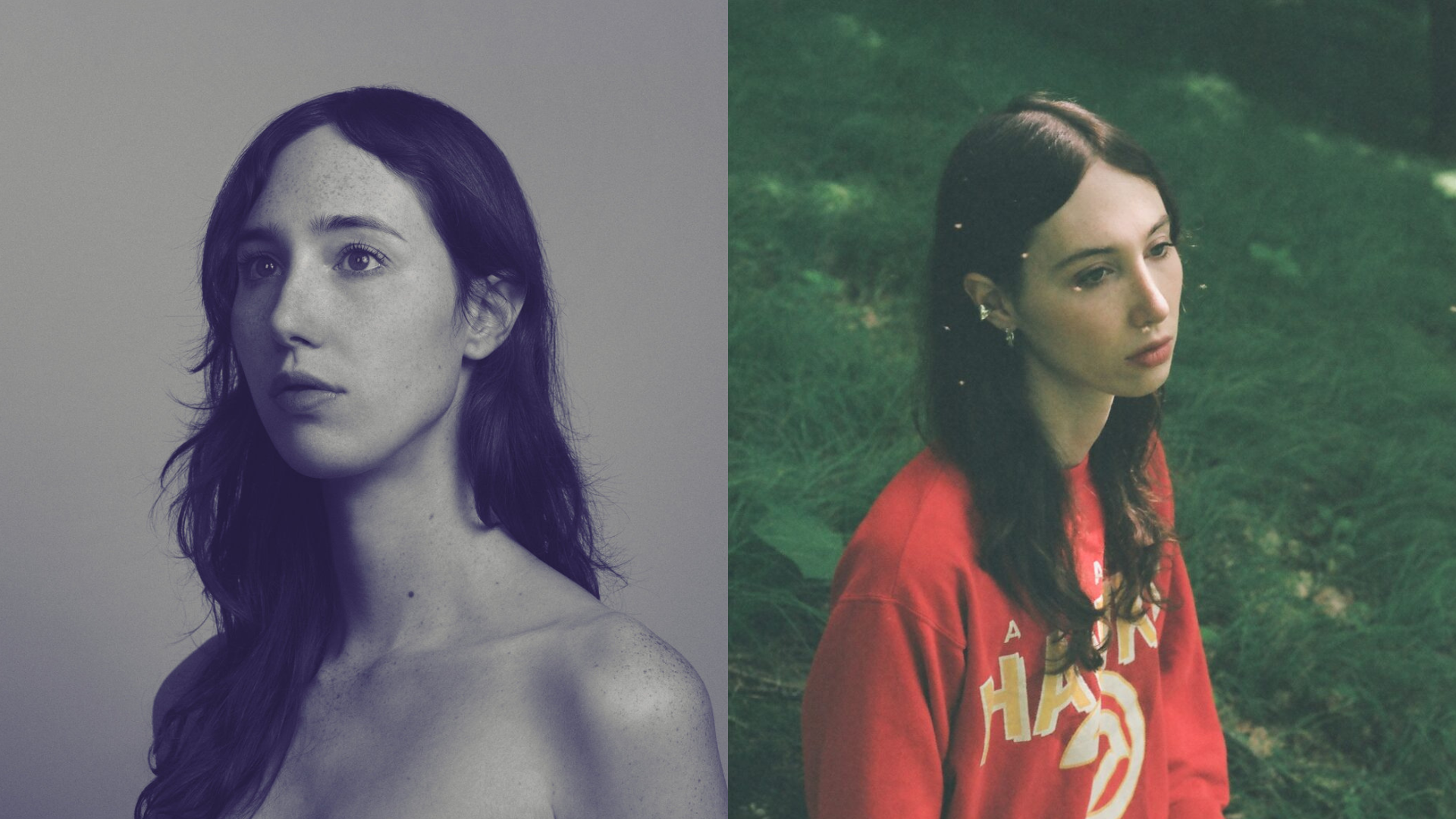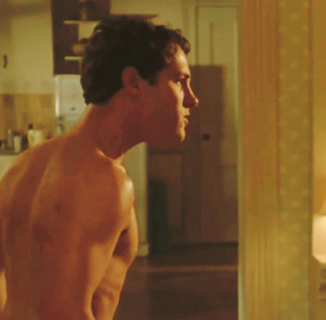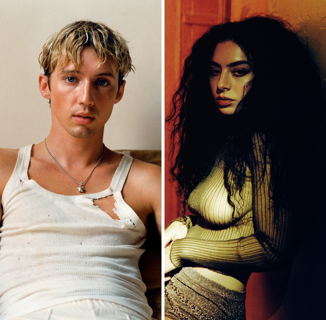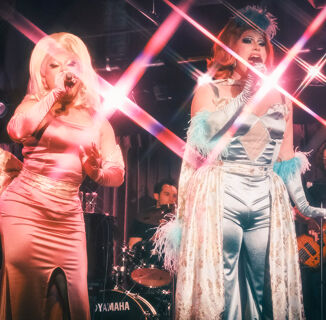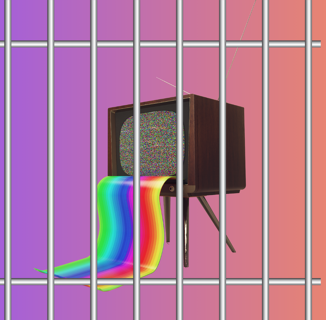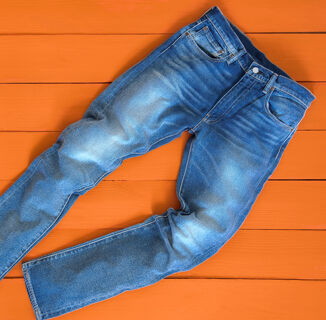Kaye Loggins releases music under the name Time Wharp, but she’s not shy about hiding herself—or her sense of humor. It’s not uncommon for electronic music producers to take on shadowy personas, releasing music into the digital ether stripped of any identifiers, but Loggins takes a decidedly different approach. Spiro World, the latest Time Wharp record, features a portrait of Loggins herself—a quietly radical act as a trans woman, though she would probably never call it that. There’s a disarming candor to her casually joking manner, and her warmth and honesty are reflected in the music, which fuses ambient textures and the open-ended improvisation of a jazz band with the layered loops of neoclassical composers like Terry Riley and Steve Reich. Her soundscapes are restorative and healing, but not passive listening—the warbling synths and soothing woodwinds worm their way into your brain and don’t let go.
For trans listeners, there’s a sly meaning to the title Spiro World – spironolactone is a common testosterone blocker used in hormone replacement therapy. In the record, transness is alluded to, but never emphasized, and Loggins herself is cautious of the pedestal that trans artists can frequently be placed upon. More than an exploration of identity, Spiro World is a sensory experience, one that can mirror the frequently overwhelming sensations that come with deep hormonal changes. There’s the possibility for beauty and texture where there was none before, but it can also be overstimulating and destabilizing, as your mind and body exit intense dissociation and come into the world. Just like a musician exploring a note or sound, you have to ride out the new emotions and physical sensations that come with HRT, sitting with the feelings and seeing what creative points they take you to.
In conversation with Into, Kaye Loggins discussed how navigating new sensations shaped her musical process, the risks that come with making work about your own identity, and why she describes her music as “bimbo jazz.”
How did you come to music, and what inspired the start of the Time Wharp project?
Not to be cliched, but it’s always been a part of my life. In high school, I was in punk bands and ska bands and metal bands, and experimented with the computer, too. I had this group with my friend called Microsoft Sam and the Good Little Christian Boys that was, like, Myspace comedy techno. We used the Windows XP text-to-speech voice as the rapper. I was into pretty wacky intense music in my early teens, like Mr. Bungle and the Mars Volta, and then by the time I was 17 or 18, I got into the contemporary indie scene, Animal Collective and Dirty Projectors, really whatever was on Pitchfork. Then I discovered Terry Riley and that has continued to be a big one for me. I was really inspired by the LA beat scene and UK bass music that was happening in the early 2010s.
I grew up in Atlanta but I went to school in Boston, and that’s when I started the Time Wharp project, about 10 or 12 years ago. I put out a couple of EPs and stuff and it got a little beginner’s buzz, but I felt like I started chasing the scene, where my original stuff was very pure and very creative. Around that time, there was this whole semi-anonymous producer culture. DJs didn’t want to be vulnerable and they didn’t want to show their face, and then the extreme of that is, like, white guys in England basically pretending to be Black guys from Detroit. It just felt like a hustle and a game, and there wasn’t very much happening in terms of new production that interested me, so I sort of dipped and saw myself out the door to an extent. Then I got really more into actual ambient music. The Light in the Attic compilation I Am The Center was a big record for me.
You can really see all those disparate influences in this album, which doesn’t fit neatly into a genre category at all. How did all those different elements start coming together for you?
I ran a label for awhile and was focusing on other people’s stuff too much, I think. I had some health issues as well and really had to go into the cave and work on myself. Around 2019, it started coming full circle for me, and I felt like I could be in the mental space to synthesize some of these influences and get back to that sort of unbridled creative energy I had when I was just making whatever on the computer. Then COVID happened and, not to tell the same old story, but having a bunch of time on my hands, it just all came together. It wasn’t a quarantine record, so to speak, it wasn’t written in quarantine, but I did take all these older ideas and some newer ones and connected the dots.
So what you end up with on this record is a full circle moment, where there’s dance music influence and new age influence, and then at the same time there’s a new synthesis. The Resident Advisor review says something about a “wry smile,” and I agree, some of it is almost somber but it also has a sense of whimsy to it. Nina Keith who plays cello and electronics on the last couple tracks coined the term “bimbo jazz” to describe Spiro World. I was like, you nailed it. When people are like, what kind of music is it and I don’t really know what to say, now I’ll just say, “oh yeah, it’s bimbo jazz.”
View this post on Instagram
Going back to that idea of the “semi-anonymous producer culture,” it feels really noteworthy that your face is on this album cover and there’s an acknowledgment of the person who made it.
I’ve never had my picture on something before. At the end of the day, I think a lot of it is social media evolving along with music scenes. I’m not saying social media is healthy, but I think especially right now, it seems like musicians and artists are able to be vulnerable online and can be an individual person who isn’t just defined by their work. Being able to separate those things is beneficial. We didn’t call it “cringe” 10 years ago, but that’s essentially what people thought, like, oh, it’s cringe to be vulnerable. It’s cringe to show yourself, it’s cringe to be funny. It’s cringe to be goofy. It’s cringe to be open and honest. I think it’s a big thing that there’s more space for vulnerability now.
More than an exploration of identity, Spiro World is a sensory experience, one that can mirror the frequently overwhelming sensations that come with deep hormonal changes.
Transness is obviously alluded to by the title Spiro World, but it’s not a record that overtly emphasizes or underlines trans identity. How did you come to that balance?
I know it’s called Spiro World, but I’m not trying to wear the transness on my sleeve. It’s not really called that out of a sense of pride, it’s actually a little bit of a dark story. After I started HRT, coincidentally or not coincidentally, I had a bunch of health issues come up and no one really knew what was going on. That’s sort of what the album’s subtitle is, “One Must First Become Aware of the Body.” People talk about this moment of taking hormones, and there being this opening and awakening, where they can see correctly for the first time and they can be themselves. But that was not my experience. It was actually very scary. I was so disassociated that coming into myself was actually terrifying, because it was so somatically profound and overwhelming to sense things. It’s almost like I became aware not only of my surroundings, but I was aware of my body, even my internal organs. I basically developed hypochondria, and I do have some real medical issues, but I made it a lot worse by how I was interpreting it all. I felt like a burden to people around me and it was a real process to be able to adjust and find a middle ground, and then building off that to synthesize change and progress into something that ends up being self-confidence and self-worth. So when I say Spiro World, like, that’s what I’m talking about. It’s about derealization and depersonalization and how sometimes change like that can be terrifying. It can be scary, but it’s also inevitable and it’s happening whether you like it or not. You can find joy and peace at the end of the road.
Based on what you were saying about the retroactive part of the creative process, it seems almost like looking into the archive of your life rather than just looking ahead.
The two things that come to mind specifically are the last track, “Delay I,” which I made in 2014 in Atlanta, and then the first half of “No Furniture/Tanagra,” just the keyboard part, that was pretty much unedited from around the same time. Those two are definitely the oldest pieces. It’s not a coming-out record, but it is a snapshot of this personal evolution and growth that I went through. It’s more about hearing those old tracks and having an emotional connection to them, and including it as a kind of empathy for the person who made that, for that version of myself, and incorporating them into the story of how I got to where I am now. It was a fun project for me because some of those pieces might sound similar, but to me mentally, where I was at then feels so far removed from the confidence I hear in the newer tracks like “Tezeta” and “Spiro World.” I think it’s just about connecting the dots between those two people, because it almost feels like an entirely different person who made that music. It’s autobiographical by juxtaposition, not by narrative.
View this post on Instagram
Being a trans person in the public eye can obviously be complicated, and sometimes I think there can be a lot of pressure on how trans artists represent our community. What has the response been like from trans listeners?
I knew when the album came out that a lot of trans girls would see it and be like, that’s a cool title, and I do appreciate that people are able to grab onto it and feel part of something. In that sense, it was sort of a gift for the community, but it’s also just a cool title. I’m in a lucky and privileged position, but sometimes being visible as a trans person, you can be put on a pedestal. And it’s like, I still have my own brain worms, I still have my own issues to deal with, and I’m still navigating it all. So it’s funny and maybe hypocritical for me to have a record that feels so rooted in identity on the face of it, but the actual story is way more complicated. That’s maybe why this record cycle hasn’t even been more on the nose in terms of those themes, because I’m not trying to exploit my identity for clicks. It’s there because it’s real, and it’s part of the actual mythology and lore of this creative process. But I don’t find it artistically fulfilling or interesting at all to exploit being trans for any kind of material gain.
I think part of why Torrey Peters’ Detransition, Baby was so successful and why it’s such a good book is because it’s not a coming-out narrative. It’s just a story, and it happens to have trans themes, but it’s not this trite memoir narrative.
I think in music we’re just now dealing with what the literature world has been dealing with for a few years. I think part of why Torrey Peters’ Detransition, Baby was so successful and why it’s such a good book is because it’s not a coming-out narrative. It’s just a story, and it happens to have trans themes, but it’s not this trite memoir narrative. I don’t know if there’s a musical equivalent, but I was very conscious of that, and I want to avoid telling that coming out story again, because that’s literally not what happened to me, and even if it did happen the way other stories did, it’s boring to me and not something that’s fulfilling. But maybe this is weird to say to a queer publication *laughs*
No, I’m with you, sometimes really emphasizing personal identity can start to feel gross. Sometimes being trans is really interesting and fascinating, but at a certain point for us, it can be boring and tedious, just like everyone’s lives.
It can be disillusioning to learn that when you’ve been out for six months, and then it goes on and you grow up and being trans just isn’t as interesting to you anymore. Now I’m interested in forming a rising tide, that whole thing, that lifts us all up by thinking in a larger context of the world and a larger audience. I just want to get back to the creativity and what actually inspires me instead of constantly thinking about who I am and what I am.♦
Help make sure LGBTQ+ stories are being told...
We can't rely on mainstream media to tell our stories. That's why we don't lock our articles behind a paywall. Will you support our mission with a contribution today?
Cancel anytime · Proudly LGBTQ+ owned and operated
Read More in Entertainment
The Latest on INTO
Subscribe to get a twice-weekly dose of queer news, updates, and insights from the INTO team.
in Your Inbox

